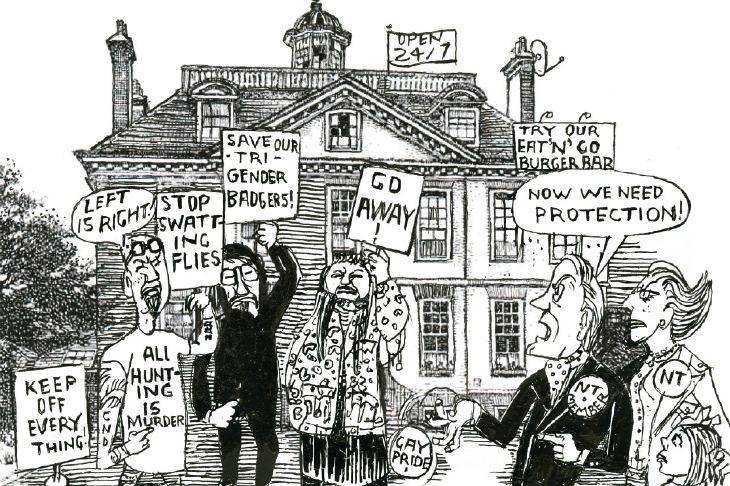For the sound of his horn brought me from my bed/ And the cry of his hounds which he oft times led/ Peel’s ‘View, Halloo!’ could awaken the dead/ Or the fox from his lair in the morning.
Back in the early 1800s, the legendary huntsman John Peel galloped all over the northern Lake District. His successors are the Blencathra Hunt, a ‘fell pack’ who hunt on foot, but the Blencathra may be the last to hunt on Peel territory. Much of the Lake District is owned by the National Trust, the UK’s largest private landowner, and at the next National Trust AGM, on 21 October, a motion is being put forward which proposes banning trail hunting on all the Trust’s land.
Members will receive their voting papers in the coming weeks — but even before the vote has taken place, the Trust has already changed its stance. Last week, it surreptitiously changed the rules for hunts operating on its land. Future ‘meets’ must advertise themselves on the Trust website, it said, and no ‘animal-based scents’ should be used.
These might seem like small changes, but as the National Trust well knows, they are not. They will make it incredibly difficult — if not impossible — for hunts to operate. Publishing information about meets in advance is a gift to hunt saboteurs. Forewarned, they can plan and gather en masse. This means more police will be needed to protect the hunt, which is an exasperating waste of police time, and more farmers are likely to think that letting the hunt gallop over their land just isn’t worth the hassle.
Because foxhounds are currently trained to follow an animal-based scent, introducing a new scent involves retraining. It might even mean that the 67 hunts affected by the ban have to breed new packs of hounds.









Comments
Join the debate for just £1 a month
Be part of the conversation with other Spectator readers by getting your first three months for £3.
UNLOCK ACCESS Just £1 a monthAlready a subscriber? Log in